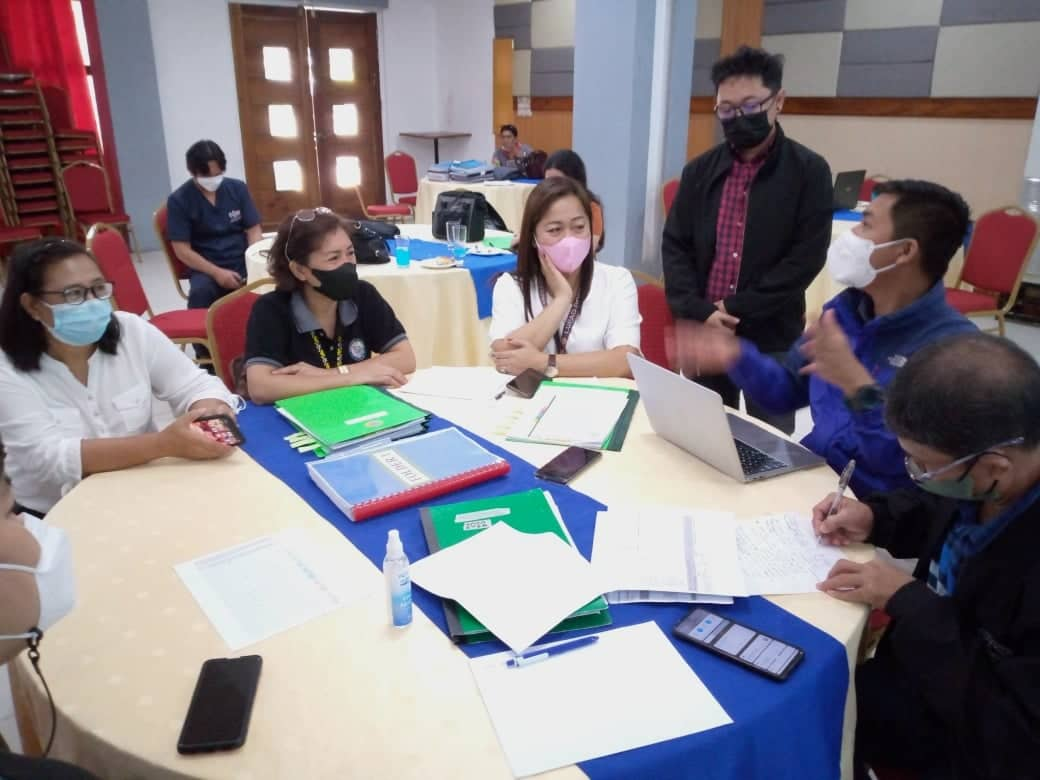DILG and PDEA to LGU Koronadal: Support drug war via CBDRP

The support of the Department of Interior and Local Government (DILG) and the Philippine Drug Enforcement Agency (PDEA) is crucial in the LGU’s implementation of the Community-Based Drug Rehabilitation Program (CBDRP) as one of the interventions and strategies in the city’s drug war.
On May 24, 2022, the DILG Central Office- Philippine Anti-illegal Drug Strategy Project Management conducted a benchmarking visit in the city to assess the state of implementation of the CBDRP in the City of Koronadal. “The purpose of the visit is to conduct an interview and review the document for them to determine what are the best practices in our program implementation to be endorsed into the central office as a basis for the possible creation of new policies”, City Local Government Operation Officer Jennifer Fernandez said during the CADAC Press Conference.
The group also visited Barangay Sto. Nino to gather data related to the implementation of CBDRP at the “grassroots level”. The collected data will be proposed to the “policy-making body” under the national leadership of the DILG that will make a significant contribution to the development of new programs and policies.
The City DILG serves as the secretariat for the City Anti-Drug Abuse Council’s programs, projects, and activities (PPAs). CADAC TWG members and capacitated personnel assessed the drug surrenderees to determine their risks and additional morbidities. The DILG was tasked with ensuring LCE and LGU cooperation all the way down to the barangay level in the CBDRP implementation.
To ensure the sustainable recovery of the Recovering Drug Dependents (RDDs), the city offered a holistic approach to recovery to address the gap between the rise in the number of drug users and surrenderees brought about by the government’s intensified anti-drug operations. The CBDRP focused on healing of the body, mind, soul through counseling and other therapeutic sessions. The client must undergo first the Patient’s Assessment and Evaluation (Screening) to determine if the RDD will be required for immediate in-house rehab treatment or community-based rehab program. If the patient is recommended to undergo CBDRP, the patient will undertake rehabilitation for a minimum of six months. Also, a complete 24 counselling sessions and unannounced drug testing are part of the requirements. An RDD will receive clinical services from City Health personnel, psycho-spiritual services from a faith-based group, and sustainability program services from other government organizations and partners.
“CDBRP graduates are a very important factor in the barangays’ drug-free status. Five barangays remain unclear. San Jose recently passed the drug-clearing before the oversight committee. We intend to clear New Pangasinan, General Paulino Santos, Rotonda, and Topland “, Fernandez explained.
On the other hand, the PDEA envisions the country as a self-polishing drug-resistant country. With that vision in mind, they employed strategies such as supply reduction, demand reduction, and harm reduction. The drug-clearing program is their main framework in the anti-illegal drug campaign. To help with the implementation of the CDBRP, PDEA agents went to the barangays to remind and encourage drug surrenderees to abide in the program. This allows the barangay to expedite their application for drug-free status.
The country is winning the war on drugs according to Chief PICE/Information Officer Katryn Gaye J. Abad. “Although we cannot quantify the overall situation in the country, based on the data we have from the implementation of our barangay-clearing program, we already have 1,158 drug-cleared barangays in our Region. Out of that total, 152 had been cleared, leaving 127 affected barangays. With that, we can say that it is a whole-of-nation approach; there is an anti-illegal drug operation being conducted, and with more than 900 people already cleared, we are in the sustainability stage,” Abad said.
Abad went on to say that they are working on strategies to keep the barangay’s drug-free status. “If we look at it, it is already 89 percent of our barangay in the region, and with that number, we can say that we are close to the goal; it just needs to be sustained,” she added.
Furthermore, Abad explained that the anti-drug campaign is more than just operations; they also have a drug reduction campaign in which they mobilize people at the grassroots level. She went on to say that it is not only the responsibility of the law enforcement agencies, but that the BADAC itself must make an effort in their barangay. The PDEA’s section on preventive education and community involvement, as well as the provincial offices, are very active in program implementation, including training of trainers for BADAC members who will conduct advocacy programs.
Following the assumption of President Rodrigo R. Duterte in 2016, Region XII law enforcement agencies conducted 7,788 operations, resulting in the arrest of 6, 677 drug personalities and the confiscation of P81.8 million in illegal drugs. “So, how can we say that we are winning the war on illegal drugs? The best way to gauge it is the citizen’s response because they can make a comparison between the former and the now.We can compare decreases in crime rates using PNP data,” Abad said.
“We are all together in this campaign against illegal drugs,” Fernandez said, encouraging the public to take part in the war against illegal drugs.
Meanwhile, with the assumption of the new national administration, Abad stated that their agency is always prepared to support the vision of the new leadership.
With the support of national lead agencies, the CADAC and BADAC continue to provide Community-Based Drug Rehabilitation Program (CBDRP) in the Barangay until there is an RDD endorsed by the court to undergo such and until there are drug surrenderees.